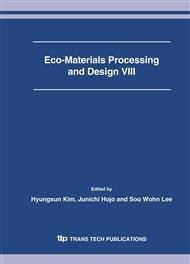p.1
p.5
p.9
p.13
p.17
p.23
p.27
p.31
p.35
Antenna Mechanism and De-Aggregation Concept: Novel Mechanistic Principles for Photocatalysis
Abstract:
TiO2 photocatalysis has attracted a great deal of attention during the last three decades. One major goal in this field is the design and preparation of TiO2 based photocatalysts possessing high photocatalytic activity to satisfy the requirements for practical applications. For the development of successful strategies to achieve this goal it is of utmost importance to improve the mechanistic understanding of the basic principles of photocatalysis. Therefore, various nanosized TiO2 photocatalysts including pure TiO2, Fe(III)-doped TiO2 and platinized TiO2 have been synthesized in our laboratories and their photocatalytic activity has been studied in detail. In particular, the correlation between the structural characteristics of these newly synthesized catalysts and their photocatalytic activity has been addressed. To explain the unexpected behavior of these materials novel mechanistic principles, i.e., the antenna mechanism and the so-called deaggregation concept have been developed and will be explained in this review.
Info:
Periodical:
Pages:
17-22
Citation:
Online since:
May 2007
Price:
Сopyright:
© 2007 Trans Tech Publications Ltd. All Rights Reserved
Share:
Citation:


